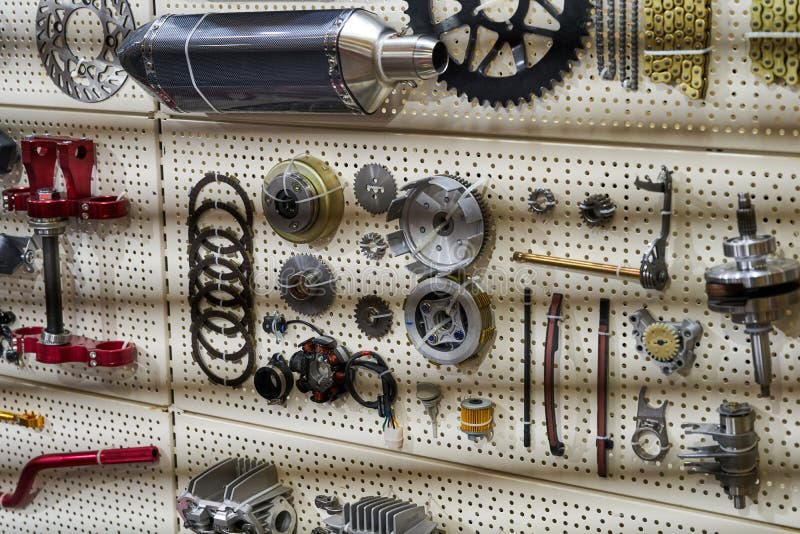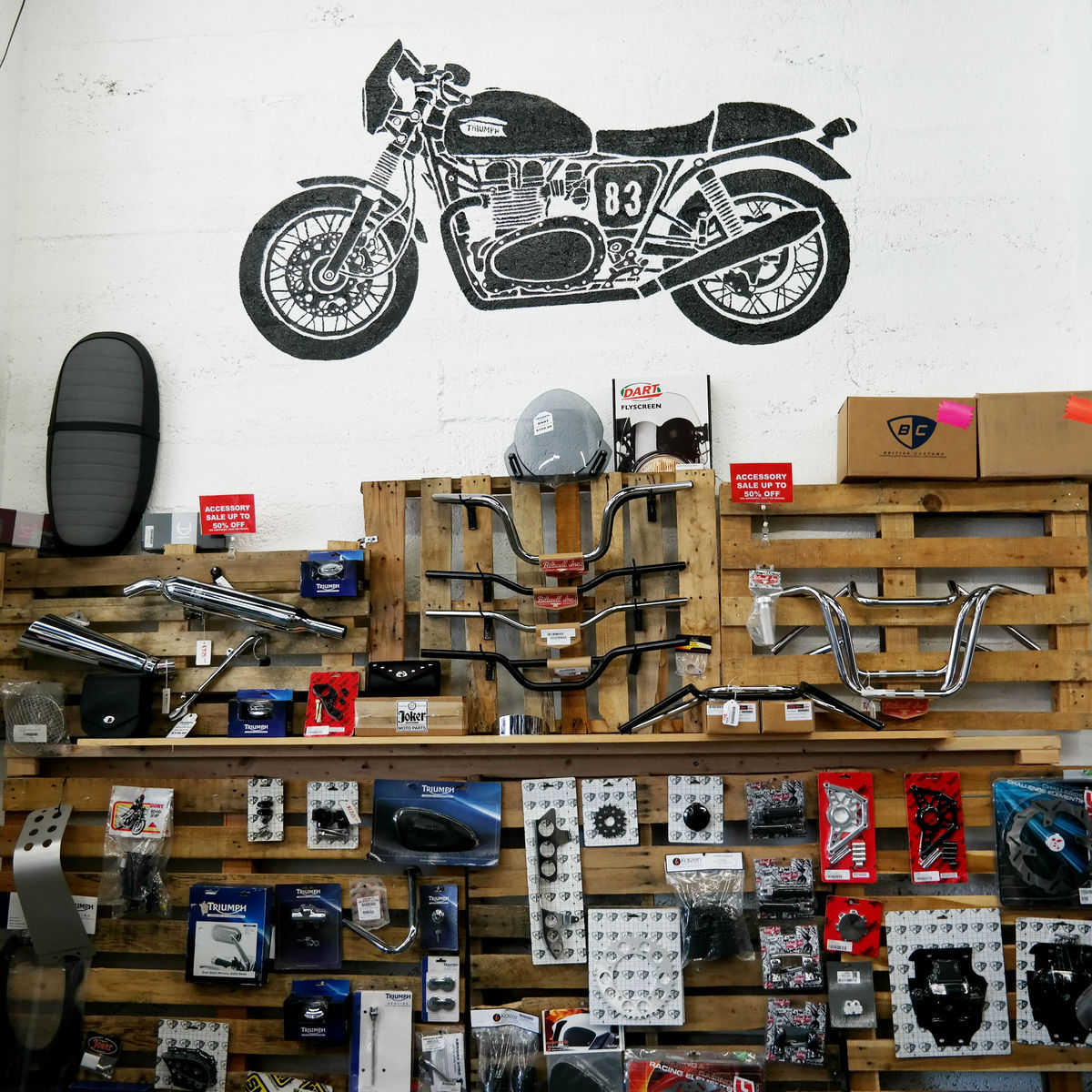Check Out Our Motorcycle Shop for Specialist Suggestions and Quality Products
Check Out Our Motorcycle Shop for Specialist Suggestions and Quality Products
Blog Article
Recognizing the Important Parts of a Motorcycle: A Comprehensive Guide for Lovers
For motorbike fanatics looking to boost their riding experience and guarantee their bikes run efficiently, comprehending the important components of a motorcycle is paramount. Each element, from the engine's elaborate functions to the critical duty of the braking mechanisms, not just influences performance but likewise safety and convenience.
Engine Elements

The camshaft plays an essential function in managing the timing of the engine's shutoffs, ensuring the exact opening and closing needed for effective gas and air consumption, along with exhaust expulsion. This timing is essential to keeping optimal engine performance and performance. In addition, the carburetor or gas shot system, depending upon the motorcycle design, is in charge of blending air with fuel in the proper ratio for combustion.
The air conditioning system, either air or liquid-based, functions to maintain the engine's temperature within functional restrictions, protecting against overheating and making certain longevity - motorcycle shop. Each component, diligently designed and integrated, contributes to the seamless procedure of the engine, defining the bike's power outcome and general efficiency
Transmission System
Essential to the motorcycle's functionality, the transmission system makes sure reliable power transfer from the engine to the wheels. This system comprises a number of important parts, consisting of the clutch, gearbox, and last drive, each playing an essential duty in translating the engine's power into activity. The clutch, typically run by a hand bar, offers to disengage the engine and engage from the transmission, allowing for smooth gear adjustments and controlled acceleration.
The transmission, often described as the transmission correct, contains a set of equipments that cyclists can by hand change via to change the bike's speed and torque result. These gears are prepared in a series that allows the motorbike to increase smoothly and maintain optimal engine performance throughout different speeds. Most bikes make use of a consecutive gearbox, requiring the rider to move gears in a predetermined order.
Braking Systems
While understanding the transmission system is vital to taking advantage of a motorbike's power, equally vital is the ability to manage and quit that power successfully, which is where braking devices enter play. Brakes are crucial for safety and security and efficiency, offering the motorcyclist with the essential control to navigate numerous terrains and problems. Normally, motorbikes include two sorts of stopping systems: disc brakes and drum brakes.
Disc brakes are a lot more prevalent in contemporary motorbikes as a result of their premium performance. They include a brake disc, caliper, and pads. When activated, the caliper presses the brake pads against the rotating disc, transforming kinetic power into warmth, thus reducing the wheel. This system offers better warm dissipation, consistent performance, and improved stopping power, specifically in wet problems.
On the other hand, drum brakes, though much less usual, are still found in some motorbikes. They work by pressing brake footwear versus the internal surface of a drum affixed to the wheel. While usually less effective in warmth dissipation and stopping power, drum brakes are easier and a lot more affordable.
Recognizing these braking systems' nuances allows bikers to keep their bikes properly and appreciate the engineering that makes certain reliable and safe quiting.
Suspension and Guiding
Suspension and steering systems are vital components that substantially affect a motorbike's handling and trip comfort. The suspension system, being composed of forks at the front and shock absorbers at the back, soaks up roadway irregularities, enhancing stability and control. Front forks, usually telescopic or upside down, compress and rebound to mitigate effects, while rear shock absorbers maintain tire call with the roadway, vital for grip and security.
Steering, centered around the handlebars, links the biker to the motorcycle's directional control. The guiding head bearings guarantee smooth operation, enabling accurate ability to move. Correct placement and upkeep of these bearings are critical for foreseeable steering response and reducing cyclist tiredness.
The suspension's adjustability is another critical aspect; preload, damping, and rebound setups enable customization to suit various riding conditions and designs. This versatility is crucial for optimizing performance, whether browsing metropolitan roads or tackling sturdy tracks. Innovations like digital shock absorber use real-time adjustments, enhancing ride high quality throughout diverse surfaces.

Electrical Solutions
After click to read guaranteeing a controlled and smooth experience through efficient suspension and steering systems, focus turns to the electric systems, an essential aspect of contemporary bikes. These systems play a vital role not just in beginning the engine yet likewise in powering various parts that enhance the performance and safety and security of the bike.
At the heart of a motorbike's electric system is the battery, which shops electrical power necessary for starting the engine and powering supporting systems - mx gear nz. The alternator or generator, combined with the rectifier-regulator, ensures the battery stays billed while the motorbike functions, transforming power into electric power and keeping voltage degrees
The ignition system, an additional crucial element, is liable for igniting the air-fuel combination in the engine's cylinders. Modern motorbikes commonly make use of an electronic ignition system, providing higher effectiveness and reliability compared to typical systems.
Lights systems, consisting of fronts lights, tail lights, and indicators, are likewise crucial, ensuring visibility and safety for the rider. Extra electronic components such as sensing units, control units, and displays contribute to advanced attributes like gas injection management, anti-lock stopping systems (ABDOMINAL MUSCLE), and digital control panels, further boosting the riding experience.
Final Thought
A complete comprehension of a motorcycle's crucial parts, consisting of the engine, transmission system, braking mechanisms, suspension, guiding, and electrical systems, is indispensable for enthusiasts intending to optimize comfort, safety and security, and efficiency. Mastery of these aspects permits educated decisions pertaining to maintenance and upgrades, inevitably enhancing the riding experience. By incorporating this understanding, cyclists can ensure their motorbikes operate at peak performance and reliability, consequently maximizing both enjoyment and long life of their vehicles.
For motorbike fanatics looking to boost their riding experience and ensure their bikes run efficiently, recognizing the vital parts of a bike is critical.Indispensable to the bike's functionality, the transmission system guarantees efficient power transfer from the engine to the wheels.While understanding the transmission system is vital to taking advantage of a bike's power, similarly important is the capability to manage and quit that power properly, which is where braking mechanisms come into dirtbike armor play. Commonly, bikes feature 2 kinds of stopping systems: disc brakes and drum brakes.
An extensive Read Full Report understanding of a motorbike's crucial parts, consisting of the engine, transmission system, stopping devices, suspension, guiding, and electric systems, is crucial for fanatics intending to enhance performance, safety and security, and comfort.
Report this page